How To Ride A Horse In Balance:
The Gymnastic Rider eBook
Addressing the age-old problem of how to ride a horse in balance, The Gymnastic Rider is an eBook that explains the way a rider must use their body in order to bring about the wonderful but elusive phenomenon of engagement - more often known as the horse being 'on the bit' - which is the only sound basis for ALL riding.

Information on the biomechanics of the horse in correct work has become increasingly available in recent times, but it is only correct rider biomechanics that can bring about the right transformation in the horse's way of going. The precise positioning, function, and development of the rider's body is a more neglected subject, with much contradiction in the information that is available on it. Perhaps for the first time, The Gymnastic Rider gives a full description of the way a rider must develop their own body in order to connect to the horse, in a truly different way from most conventional teachings: one that is capable of bringing the horse's movement into balance without blocking it in any way.
If we look beyond the many different disciplines, activities and schools of thought in riding, the real enjoyment of being on a horse's back comes down to one thing: whether or not we are in balance with the movement. The horse is capable of sharing his power with us, but we can only truly become one with it if we know how to form our own body, in a way that allows us to connect to the horse, and bring his motion into balance without stifling its freedom.
The Problem with Conventional Teaching of How To Ride A Horse
In the beginning, when we are taught how to ride a horse, the focus is usually on how to control the horse's speed and direction with rudimentary aiding that comes down to using the legs to go forwards, and the reins to slow down and control direction. In terms of balancing with the horse's movement, the rider is usually left to find their own solutions, and therefore ends up partly fitting in with the horse's own natural way of balancing, and partly compensating for it. The communication with the horse may become more refined with practice, but the real, gymnastic interaction of the rider's body with the horse's is rarely addressed in a profound way, even at the highest levels of equestrian disciplines.
As a result, instead of learning the how to ride a horse in balance by addressing the sources of the imbalance which occur in the horse's natural way of moving, we learn how to compensate for the imbalance in various ways, often largely with the reins.
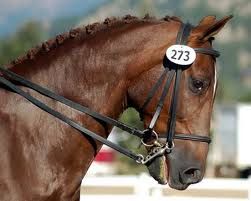
When we try to balance with the horse by using the reins, no matter how 'refined' this use is, the problem is that we block the flow of movement that the horse generates, stifling its potential purity, power and beauty. We quickly come up against the horse's resistances, to which the only solution seems to be force and domination with harsh aiding.
There is another way of learning how to ride a horse in balance!
The alternative requires that we gymnastically train our own body in a very specific way that allows us, firstly, to deeply and consistently connect to the horse's movement, and secondly, to channel and rebalance that movement, so that we harness its power posturally, with our body, not our hands.
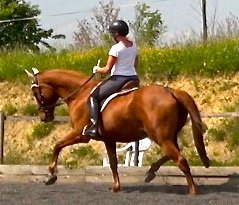
If we choose to learn this way of gymnastically influencing the horse with our body, we give up the 'easy' way to control the horse, but we discover a whole realm of sensations that are so fundamentally GOOD and fulfilling that we will never want to go back to the other way. With patience and determination, the control of the horse will eventually transcend anything that is possible through conventional riding techniques.
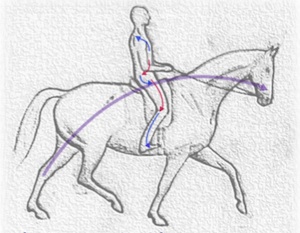
This way of riding is founded on the principle, and unique phenomenon, of the horse's postural engagement, whereby his whole body becomes unified by a powerful 'ring' of postural muscles, which adjusts the whole dynamic of his motion, so that it becomes strong and balanced for carrying a rider. The secret of generating this engagement, so rarely revealed in the teaching or theory of how to ride a horse, is that the rider must engage their own posture in a specific way, creating a 'bio-mechanism' that modifies the horse's movement through the deep unity it brings about.
The gymnastic rider is the cog that sets in motion the powerful and harmonious mechanism of the horse's postural engagement. This 'cog' is made up of the seat, the leg and the influence of the posture as a cohesive whole. The parts of the body are positioned in a particular orientation and used in a specific way to channel the horse into engagement.
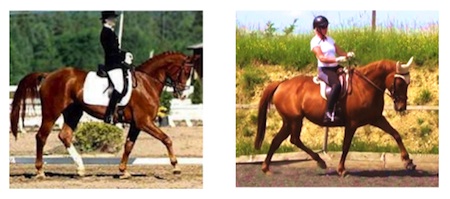
These pictures show the difference in 'balancing' a horse by blocking the movement (left), and balancing a horse with postural engagement (right). In the first, the energy of the flow of movement is completely choked, whereas in the second, it is unhindered, because the balancing is done posturally, instead of by holding onto the reins.
Why Do More Riders Not Understand How To Ride A Horse In Balance?
You might be asking yourself why such a way of riding would not be more widely taught and understood? We often ask ourselves this question too! But the answer is that there is simply so much going against learning to ride in this way.
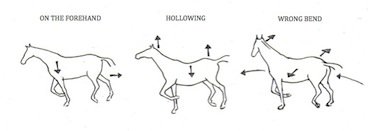
- Firstly, everything about the horse's natural way of balancing is against engagement, the illustration above shows the principle ways that this manifests. Because the horse's strength is so much greater than ours, we very easily become a passenger to this natural balance dynamic, instead of correcting it gymnastically.
- Secondly, both the horse's and our own natural crookedness together form a major obstacle to engagement, which is seldom fully addressed.
- Thirdly, we are not made in the way that puts us automatically in the right position for riding in balance - we must work consciously and diligently on our body to form it in this way.
- Lastly, and perhaps most importantly, our own motivations for quick results often override the patience needed to create a real change in the horse's way of going. The long way is always the short way to real, meaningful results, but often we let our craving for external success and recognition overshadow it.
For all of these reasons, and others not mentioned here, the understanding for how to ride a horse in balance is rare, and it is never something that is just stumbled upon. It takes enough specific positioning of the rider's body, and an adherence to certain simple landmarks, to change around the whole dynamic of horse-rider balancing. After this, the horse's responses can keep us on the right track.
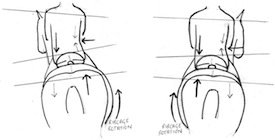
However, if we don't make these fundamental changes in the way we are interacting with the horse, then we will never even discover that a whole different way of riding exists. This is why at HHT we are passionate about passing on to riders the knowledge that opens up this wonderful realm, and this is the vocation behind The Gymnastic Rider book.
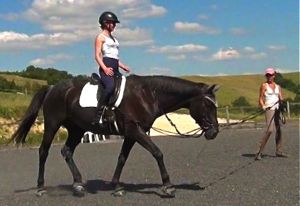
The Gymnastic Rider eBook takes the different elements involved in learning how to ride a horse in engagement, and describes them in detail, but always in a clear and practical way. There is no complex and confusing jargon, just an effective communication of what to do with your body, which is founded on our study of the rider's real influence on the horse through teaching many types and levels of rider on the lunge, where there is no room for any fakery or short cuts. We have developed this technique of how to ride a horse in our own riding, showing how it is can bring about the beautiful balanced motion of engagement in ANY horse that does not have physical problems to prevent it.
How To Ride A Horse In Balance: One Step At A Time
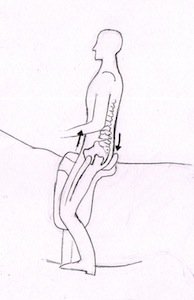
The first chapter of The Gymnastic Rider is on the seat: the core of the rider's connection with the horse. This chapter presents a conception of the seat position and function that is completely different from traditional teaching. This position allows a connection with the horse's movement that enables the rider to join with and enhance the transmission of energy from the haunches through the horse's back, initiating the longitudinal stretch that is so essential to postural engagement. From this connection, the rider is then able to use postural engagement to re-balance the horse's movement and create genuine collection. The collection of the horse with the seat is the 'holy grail' of dressage that is seldom experienced because the basic position of the rider's pelvis in the saddle is widely misunderstood. As a result, riders are taught how to ride a horse in collection by blocking with the reins (or conditioning the horse to block his movement), but this can never have the same effect as bringing the horse into postural balance while the transmission of power is maintained.
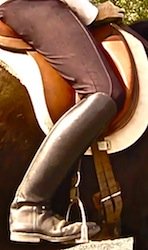
The second chapter of this guide on how to ride a horse in balance focuses on the leg: the second major tool of the rider, and perhaps the greatest challenge in becoming a gymnastic rider. The process of acquiring an effective leg is explained step-by-step, along with, most importantly, the reasons for the correct leg position and aiding. This chapter shows how the leg is not only there to create forward movement, but also has a crucial role in the alignment and channelling of the horse's body. One of the main focuses of this approach to the leg is its development as a tool for generating relaxation through yielding. This is in contrast to the use of the leg that generates tension in the horse - unfortunately common in riding.
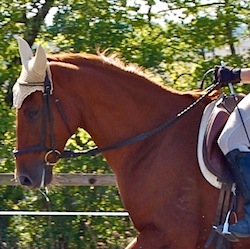
The subject of the third chapter of The Gymnastic Rider is the contact. The reason that this is the final chapter of this book is that the correct connection between horse and rider through the rein is purely the product of the rider's use of the seat, leg and posture to generate the horse's stretching into and softening onto the bit. A correct contact can never be understood nor achieved without a basic mastery of the seat and leg. The various dynamics of the contact are fully explained, including the possible pitfalls of using the contact incorrectly, not only for collection, but also regarding its use to compensate for the horse's natural crookedness. The use of the contact in bending is also fully explained, and the approach is again one that is not common in most teaching of how to ride a horse on the bend.
What Kind of Rider is This Book For?
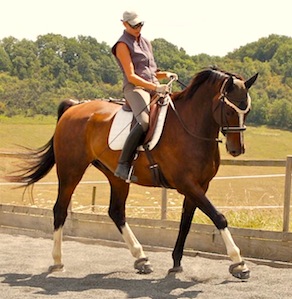
Although this book is founded on a passion for dressage, it is appropriate to any rider who wants to improve the quality of their basic connection with the horse, in any equestrian discipline, at any level. We believe that real dressage truly is the foundation for all the other riding disciplines, because it is only through its principles that the horse can carry a rider without either physical damage or mental stress.
Horses were not made to carry humans, just as humans were not made to ride horses, so it is our duty to make it something they can do as comfortably as possible. Developing our own body in the right way for good riding is how we can do this. For riders who are interested in dressage as a discipline in itself, this book provides a way of riding that corresponds to the ideals so often stated in dressage theory, but so rarely actually made a reality in practice.
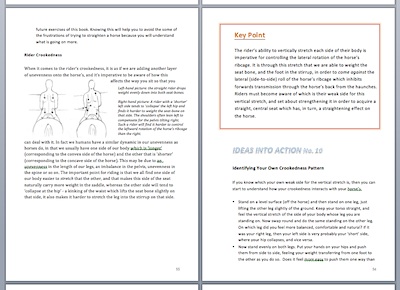
The Gymnastic Rider is not just another dressage 'tome of reference', full of dense theory that is difficult to know how to put into practice. This book actually takes you through a practical progression of developing the different parts of your riding in the right order. Each step gives detailed instructions, practical exercises, and prepares you for the challenges you are likely to encounter. It is the next best thing to one-on-one teaching, with the advantage that, in using the book as a guide, you have the time to do things at your own pace, and you have a permanent reference to go back to at any stage. With the help of this guide, you have the luxury of taking your riding right back to the basics, and building the foundations for a powerful and effective way of riding, which you can then build on and refine ever after.
Features of the eBook:
- Throughout the eBook there are 'Ideas Into Action' sections, which give step-by-step practical instructions for exercises which relate to the text. In this way the reader can start applying the theory to their riding and feel the results for themselves.
- The text also includes frequent 'Key Points', which summarize and emphasize an important point from the text, in order to make the ideas as clear as possible.
- 'Progression Points' focus on the development of certain aspects of riding over time, the challenges to expect and how to deal with them.
- Many diagrams and drawings by the author, along wih colour photographs illustrate the text with exceptional clarity.
- This unique guide on how to ride a horse in balance comprises more than 200 A4 pages, with a total of 55,720 words.
- When
you buy the book, you will receive secure links to download each
chapter in PDF format, which you can then read on your computer,
smartpad or smartphone, or alternatively print out to read on paper.
Get the Introduction to The Gymnastic Rider for Free!
We are offering the 15-page introduction to this eBook for free, with no obligation to buy the ebook. It provides an explanation of the ideology of this way of learning how to ride a horse in balance, including a discussion of the motivation behind your riding, which determines whether it will be either profoundly fulfilling for you or not. This way you will know if this way of riding is something you want to pursue.
Just click on this image (right) to get your free introduction.
The Value of High-Quality Information
The Gymnastic Rider eBook brings together the exclusive information that, at HHT, we would normally give to a rider in a minimum of twelve specialist lunge lessons, focusing on each part of the position and its influence on the horse.
These lessons have a value of at least €450.
The Gymnastic Rider is available for only €29.99.
Although it does not give the same immediacy as direct teaching, this book has the advantage of a great depth of explanation of each detail of this way of riding. Detail we don't have time to explain as extensively during teaching, and which is not always retained by the rider.
Following the step-by-step exercises given in the book will allow you to put into practice this unique gymnastic development of your body at your own pace. It also shows you how to make the horse your best one-on-one teacher - and the horse is one teacher who is NEVER mistaken!
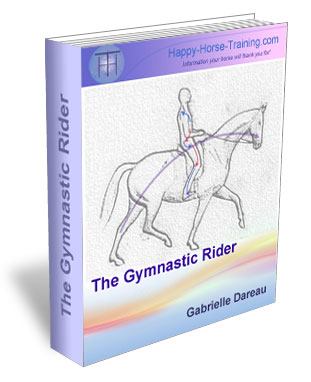
Return from How to Ride A Horse in Balance to the Happy Horse Training homepage
The pages on HHT are so wide-ranging and interrelated that we strongly recommend you look at the site plan to find other subjects that may interest you.
The Key to Unlocking the Horse
The Importance of the Posture in Riding
The Ultimate Dressage Solution
What Does 'On the Bit' Really Mean?
New from HHT!
AudioRide is a series of exercises designed to listen to while you ride.
Audio descriptions guide you through each step of developing a balanced, dynamic connection with the horse through your position.
This truly innovative learning tool gives you a whole new way of being guided in your riding, in a calm, clear, step-by-step way.
Free Download! Introductory Exercise: Riding in the Now
The Gymnastic Rider eBook
Now available exclusively from HHT!
A unique, comprehensive guide to practical rider biomechanics. This professionally produced eBook takes the rider through the process of developing their body in the specific way that brings the horse's movement into harmony and balance, without force and constraint. Click here for full details, and to download the 15-page introduction to the book for free.
Join the Happy Horse Training group on Facebook!
See and share topical info, news and photo's, and take part in lively discussions.
Click here to go to the HHT group (make sure you log into fb first) and then click on the 'join' button at the top of the page.
Join the Whole Horse Newsletter!
HHT's free monthly newsletter giving you wide-ranging and intelligent insights into holistic horsemanship.
Just enter your details below to join.
Free bonus on the riding position with all new subscriptions: Ten Top Tips To Instantly Improve Your Connection With Your Horse.
Click here to see back issues of The Whole Horse newsletter
Train Your Horse
The Holistic Way
How To Train A Horse Without Force
is a unique guide to training horses through energetic connection and
gymnastic training. Part 1 covers everything on the ground, from
handling to the lungeing technique that develops strength, straightness
and engagement. Comes with a free eBook supplement on Horse Trauma.
Click here for more details.
"As a student of Zen Buddhism for nearly three decades, I've often wondered when someone was going to write the book on Zen and the art of horsemanship, and I think that your emphasis on mindfulness and energy connection gets right at the heart of the matter."
- Prof. Teresa Lloyd, U.S.
Do You Have
A Horse Story
To Share On HHT?
So many people have been through
wonderful experiences with horses, whether in training or otherwise. If
you've made a change in a horse's life - or one has made a change in
yours - tell us about it here.
Learn The Natural Barefoot Trim - The Simple Way
The Simple Seven-Step Natural Trim is a comprehensive step-by-step guide to a cutting-edge barefoot trim. Click here to find out more.
What people say about HHT:
"The riding instruction is outstanding, if instructors in the UK taught this way there would be a lot of happy riders and horses."
"The riding tuition exceeded my hopes and expectations by a long way; giving me an exciting new facet to horsemanship which is lighter. more subtle, more elegant and more meaningful. It is as if a new door has opened bringing more sunlight and air."
"My goodness - what a change has taken place in my riding. I think that I'm starting to sit 'into' the horse rather than on top of him. I felt my horse's movements in a way that has almost never happened before"
Click on Testimonials for more
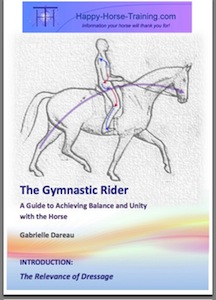





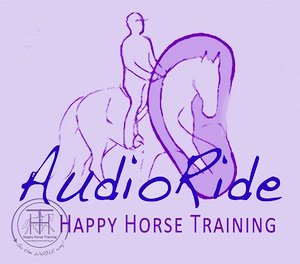



New! Comments
Anything to say about this page? Leave your comment in the box below.